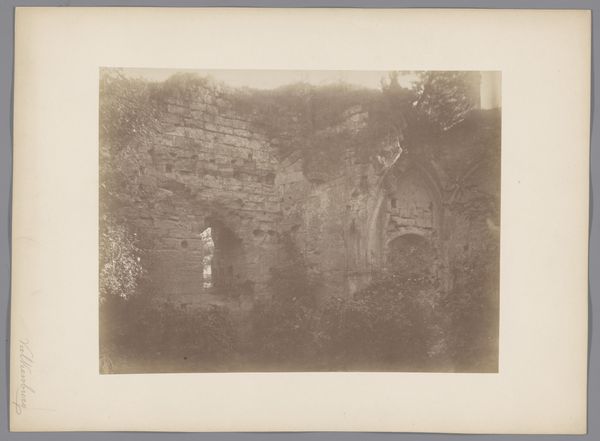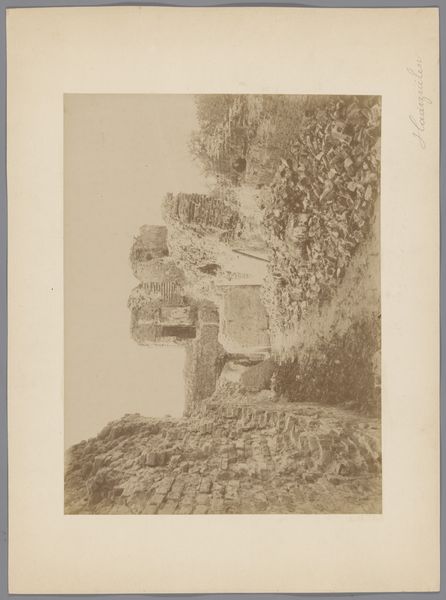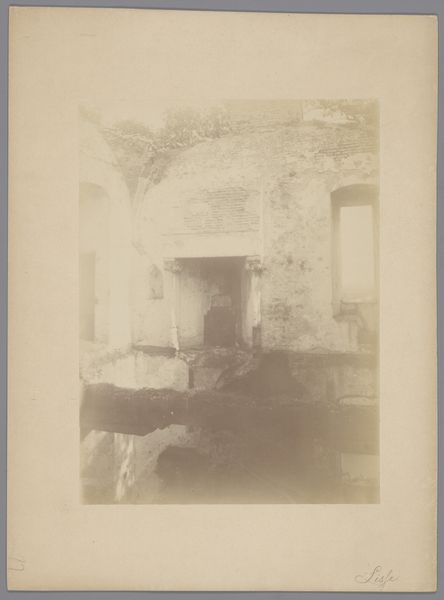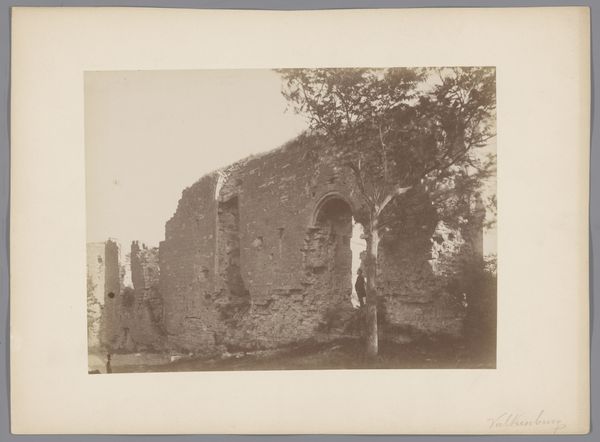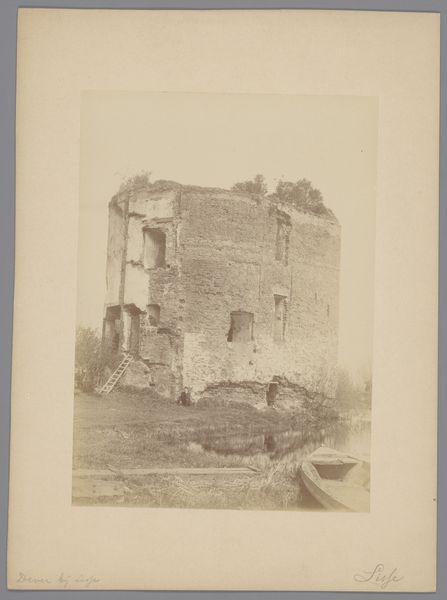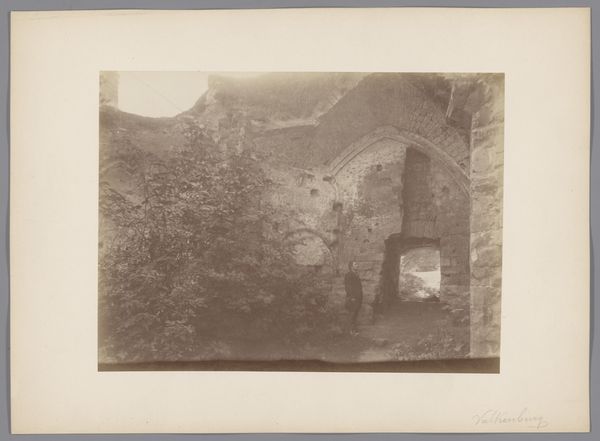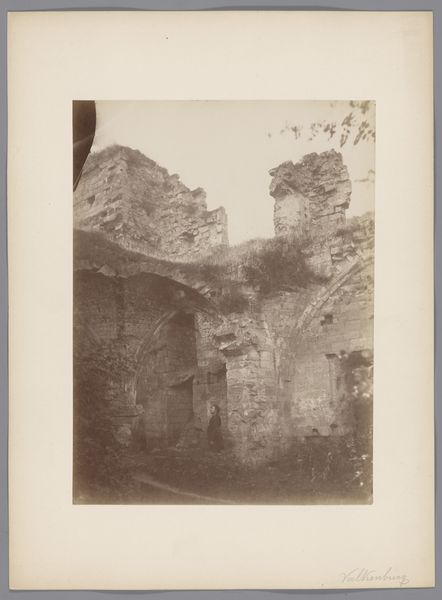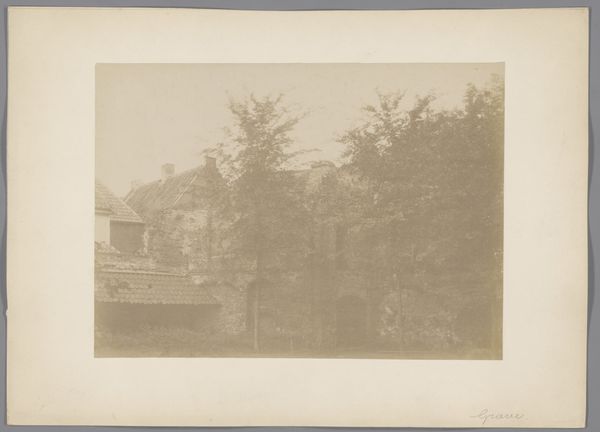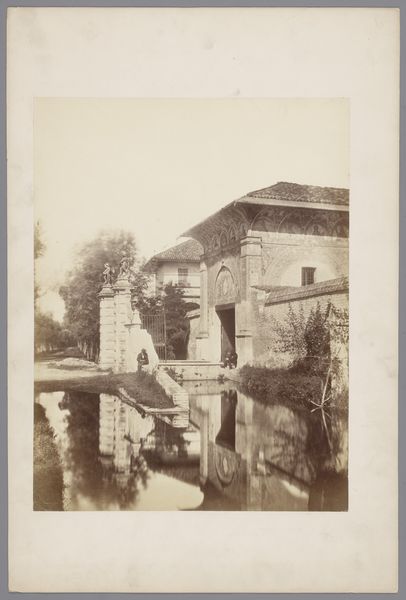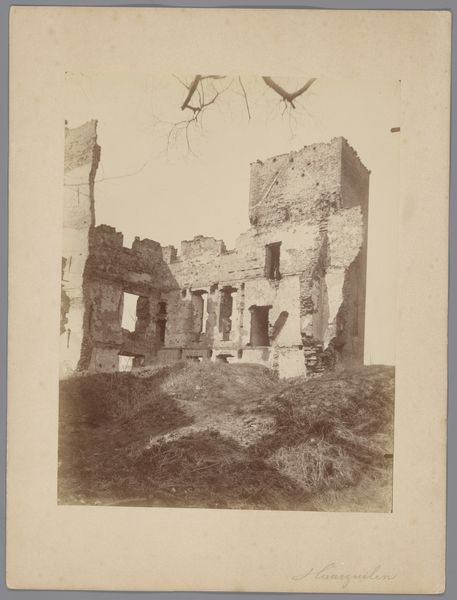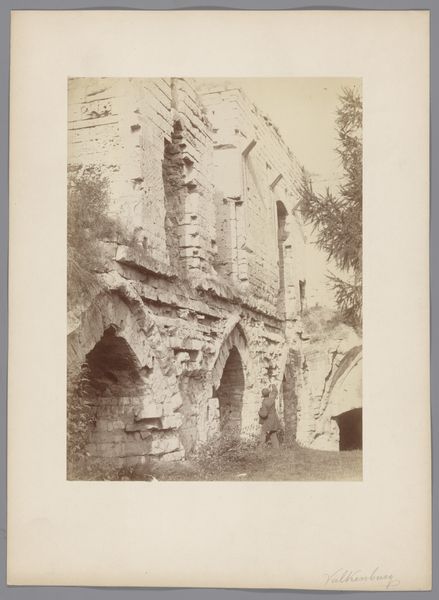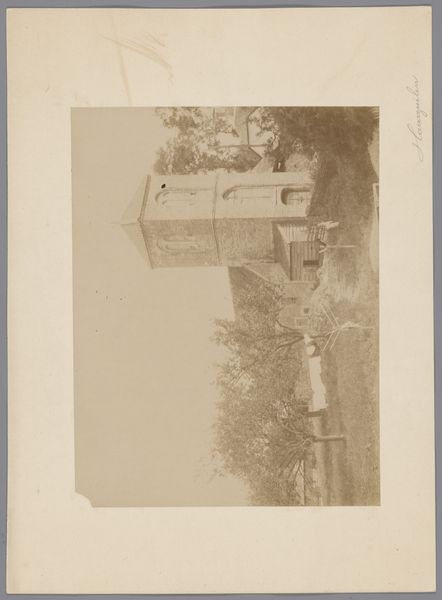
Copyright: Public Domain
Editor: This albumen print, taken around 1870 by Carl Friedrich Mylius, shows the fireplace within the Imperial Palace in Gelnhausen. It's striking how nature is reclaiming this space, these formidable ruins. How might we interpret the role of architecture and nature within the broader historical context? Curator: It's fascinating how these historical photographs became, in themselves, documents that participate in shaping the narrative of German history. Think of the 19th century, particularly after the Napoleonic era. There was a surge in national identity seeking roots in the medieval past. This image doesn’t just show a ruin; it offers a tangible connection to an idealized, romanticized, imperial past, now crumbling and softened by nature. Consider the socio-political currents: Who was commissioning or buying these images? And what were they meant to represent? Editor: So, it's not simply about documenting architecture but about forging a specific cultural narrative? The palace is German, and also in ruins. Does this have something to say about nation-building itself? Curator: Precisely! This is not neutral documentation; it actively participates in the cultural politics of the era. It reminds us that even photographic ‘realism’ is always mediated by perspective and intention. Who gets to define ‘German-ness’, and through which historical artifacts? Do you think the depiction of the ruins as overcome with greenery adds anything to the sense of the "decline" of the German state? Editor: Yes, it almost sentimentalizes a loss but perhaps hints at something new emerging from the ruins, linking to a nationalistic hope. I didn't initially consider the active role this image plays. Thank you for opening up that historical context for me. Curator: And thank you for bringing your perspective. Analyzing the motivations behind such imagery helps us understand the complex relationship between art, power, and national identity. I now better grasp the artist's intention to romanticize his own nation.
Comments
No comments
Be the first to comment and join the conversation on the ultimate creative platform.
